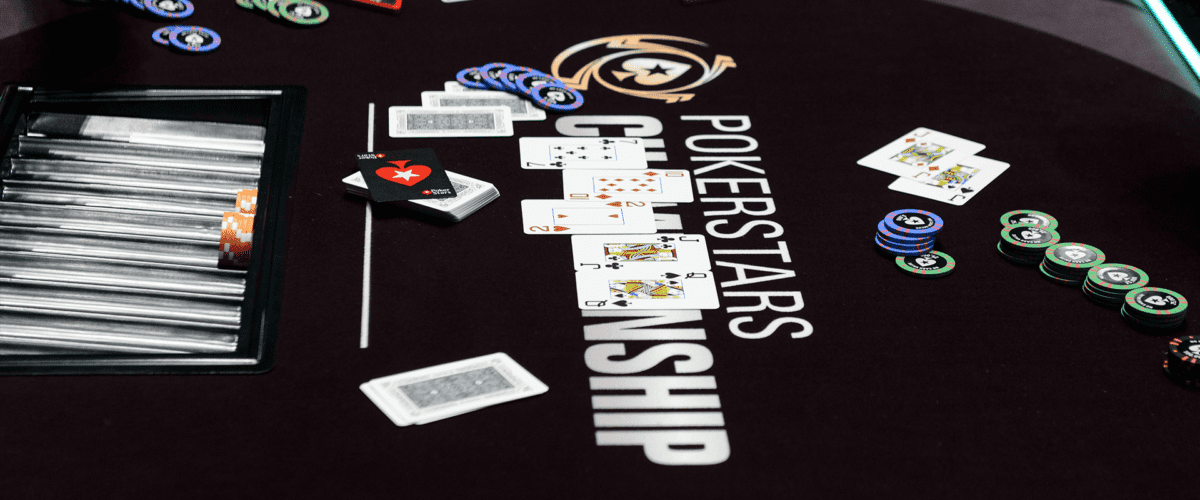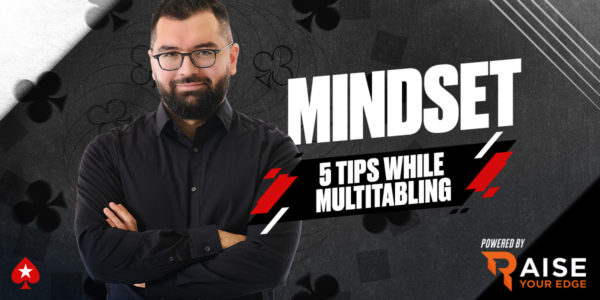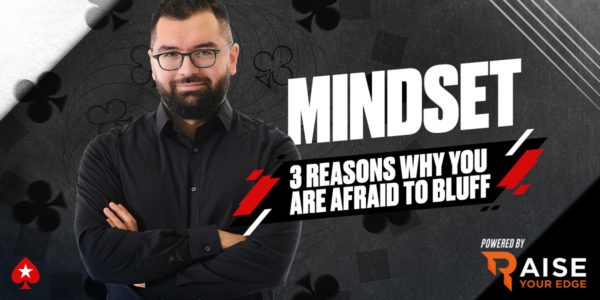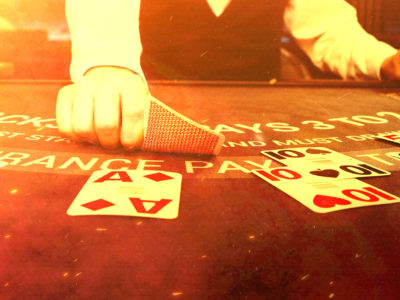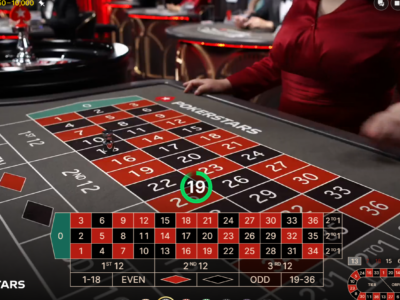Inside the Mind of a Pro – Reg Battles in a 3-Bet Pot
Today’s hand is a late position 3-Bet pot at 100NL ZOOM. These are the sort of common situations that can become quite aggressive especially if the regulars in question have history and egos. Since the author is one of the most serene and peaceful poker players around (I wish), there will be none of that bravado here, just strategic analysis!
Pre-Flop
I am dealt A♦ J♣ after posting my $0.50 Small Blind and it folds round to an aggressive Button who makes it a very standard and sensible $2.50. The Button is 24/19 with a fold to 3-Bet of 50%. These are very standard stats and offer me very little in the way of an exploitative read. The player in the big blind looks like a passive opponent and so flatting this hand is definitely not out of the question. The reason we usually avoid such a play is that not closing the action leads to a very real chance of being squeezed and realising no equity whatsoever through having to fold. When we have a passive player lurking in the big blind, however, this is threat is significantly reduced. AJo is the sort of hand that performs quite well as a flat-call because it plays very well against the worse off-suit Ax and Jx that we leave in Villain’s range by just calling. 3-betting, however, is still a perfectly fine choice and so I choose to mix my actions with this hand between these two options. I elect to 3-Bet this time round and make it $10 – my standard sizing when 100BB deep like we are here.
Villain makes the call. I expect him to have a standard range of small pairs, medium pairs and some medium to high pairs like JJ and QQ at a small frequency. Also consistent with his actions so far are big off-suit broadways; all kinds of suited broadways; suited connectors; and some suited aces. The big blind folds as he normally will.
The Flop
The flop ($21) comes down [Js] 9♣ 7♥ . Normally, in a 3-Bet pot, the pre-flop 3-Bettor has a concentrated range advantage because he holds the very best starting hands which the pre-flop caller would frequently have 4-Bet instead of calling. This board, however, has a unique flavour as it hits some hands very hard and these are holdings that both players can have on a frequent basis. Villain has just as many hands like [JJ, 99, 77, J9s, T8s, 97s] as I do. In fact, he might have more since I shall occasionally flat 99 and 77 with a weaker player in the Big Blind and might fold T8s and 97s pre-flop from time to time. I have more overpairs than Villain does and so retain a small advantage in the context of range vs. range, but this board is pretty equal for both players. When this is the case, the out of position player wants to limit the amount of money he invests into the pot. I do not want to bet here at a very high frequency and can consider throwing in quite a few check/calls and check/raises to protect my checking range, which will continue quite a few holdings that are forced to check/fold. My specific hand on this occasion, however, is one that opts to do quite a bit of betting as it is strong but vulnerable to certain bad turns and rivers killing our action or hurting our equity. I could check or bet small here and I opt for the latter action. I make it $6.18 which is around a third of the pot. Villain raises to $14.
This flop raise is as tiny as it is unorthodox, but this opponent tends to prefer the raise button to the call button. Since he plays much more of an aggressive strategy than most players, I expect to see a good mix here of value hands, bluffs and maybe a few thin value raises like KJs that are trying to deny equity by making me fold some live cards. This range contains a lot of live outs against my hand so I think 3-betting this hand has some merit. The trouble with flat calling is the massive amount of equity Villain can realise by seeing turn and river for no additional cost when I check turn and he checks behind. I want to deny equity to holdings like AQ etc. which are buying themselves a pretty cheap path to the river if I merely call. My weaker Jx will be forced to just call here, but AJ can mix in some re-raises and that is the option I choose this time.
I make it $33, setting up a stack to pot ratio where only one more bet exists. This will limit the options of Villain’s more marginal hands. Villain calls in position – a very common action for his range against my small sizing and now I expect to be up against a mix of stronger hands and weaker ones.
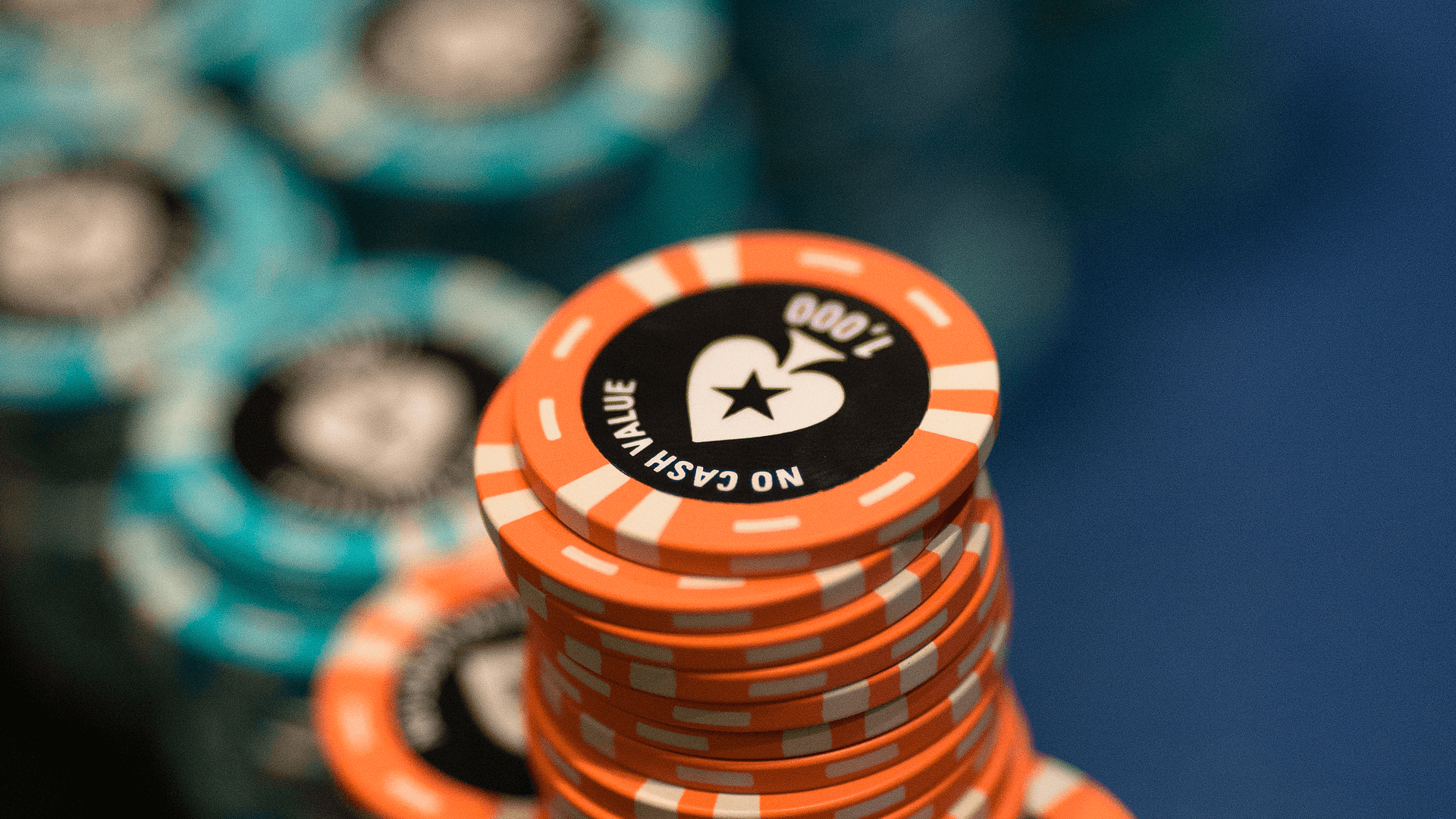
The Turn
The turn ($87) is the safe 9♥ and we have an effective stack of $58. This is actually a wonderful card for me as it is unlikely that Villain was raising middle pair on the flop and his combinations of 99, J9s, and 97s have just been slashed. I do not think that shoving myself is the right idea. It will be pretty easy for my opponent to fold most of his worse hands that are now drawing much thinner than before, and simply call with the stuff that crushes me. Bluff catching is therefore the most sensible way of proceeding. Since Villain’s draws and bluffs are now closer to drawing dead, I need him to go after fold equity with these hands and try to bluff me off of the pot to make more money. I check and Villain makes another common play, choosing to check behind. This play makes a lot of sense as his draws can always wait until the river to try to bluff and he grabs himself a free card by checking back.
The River
The river ($87) is the lovely 3♣ . I find myself in the same situation as the turn. Because Villain raised the flop, his range is now weighted much more towards nutted hands and bluffs than it is a marginal top pair. While, KJ and the like are not impossible, they are very discounted at this point in the hand. When you hold a medium-good hand against a range that is mostly either comprised by better hands and bluffs, it is proper to check and then either call or fold depending on your understanding of Villain’s bluffing frequency. It is not a stretch to infer that a regular who does a lot of raising on the flop could also bluff quite often on the river, and so, I plan to check/call. Villain shoves for $58 into $87 and I snap-call, following the plan. Villain rolls over [Qc] 8♣ , a fairly typical bluff. It is possible that he is controlling his bluffing frequency and checking back some nutted hands on the turn, but I think there is a high likelihood of players like this bluffing too often in this spot. In any case, this hand has been a success.
View Other Blogs




